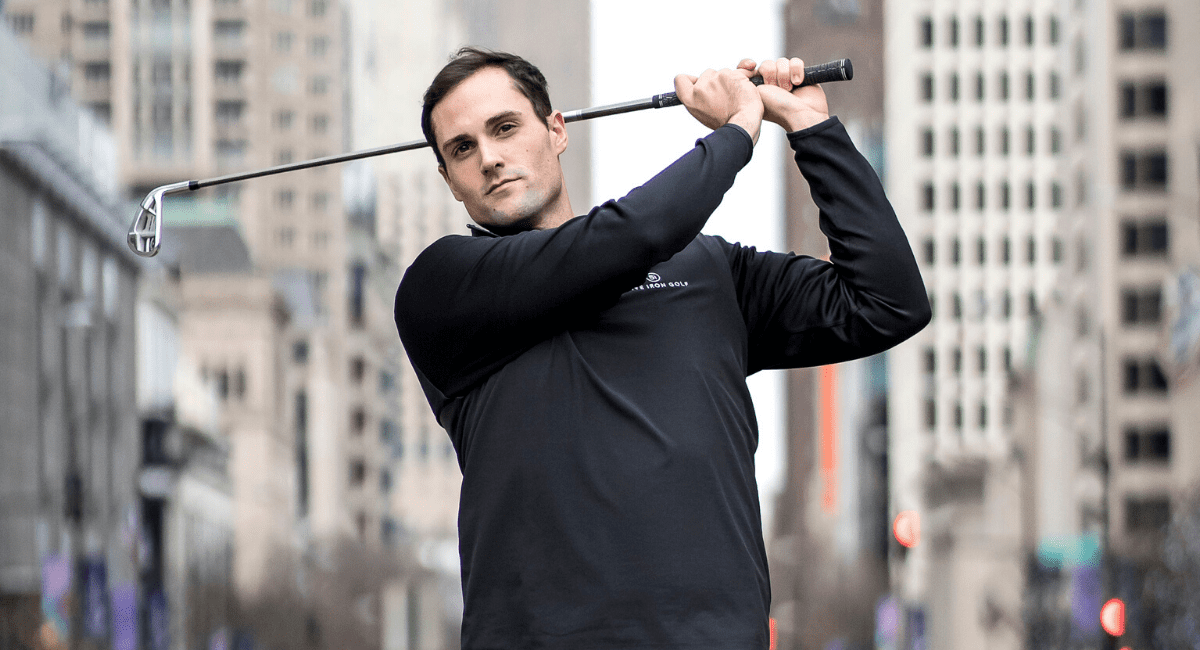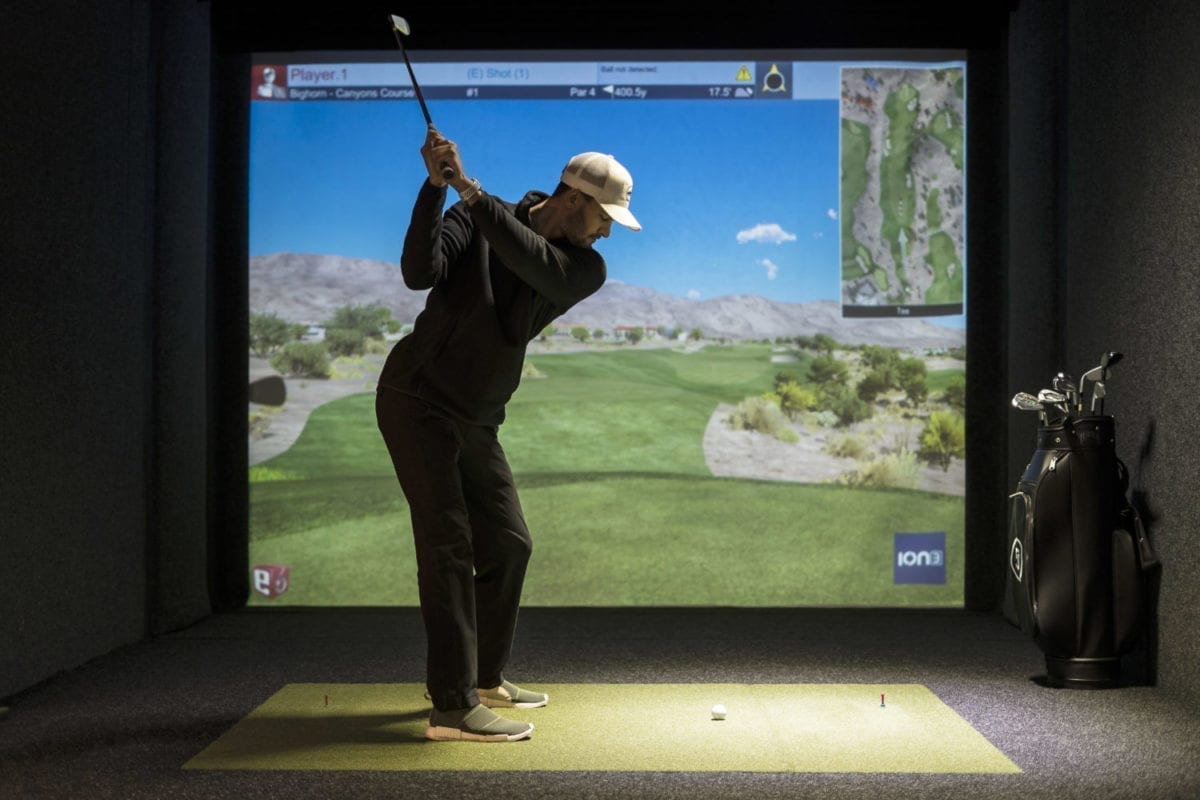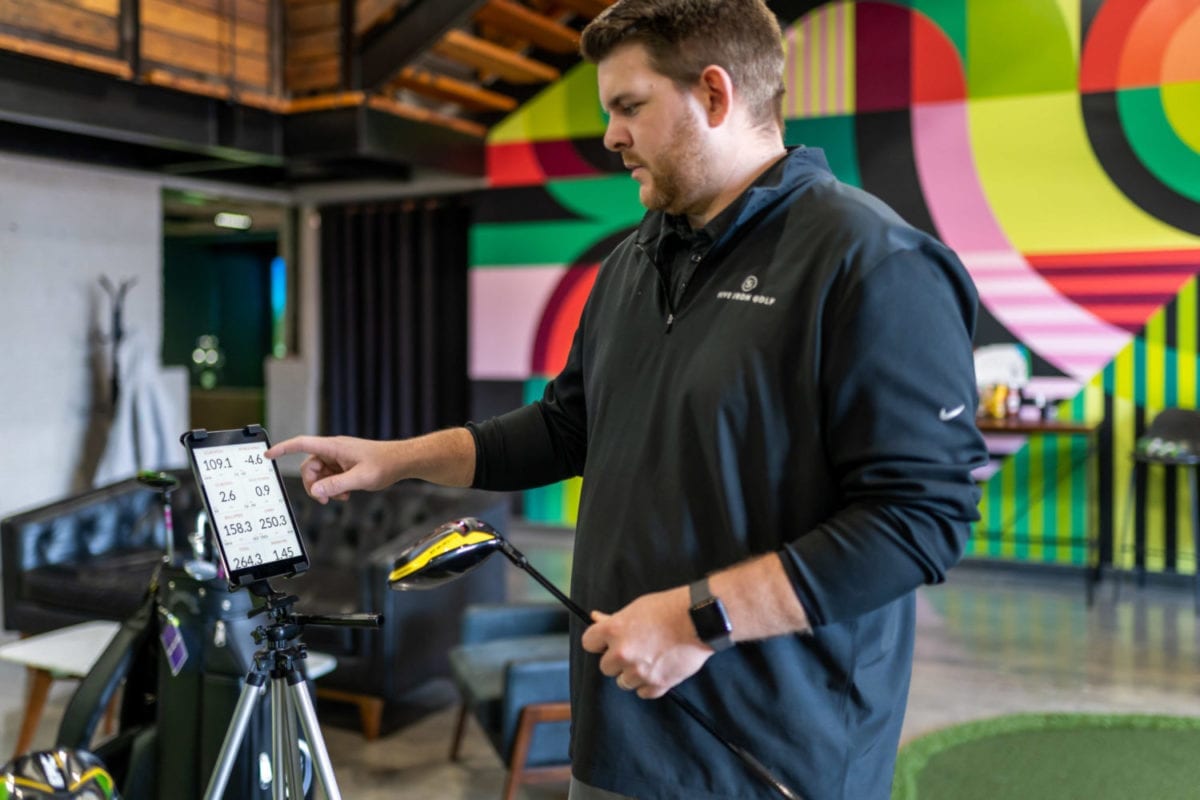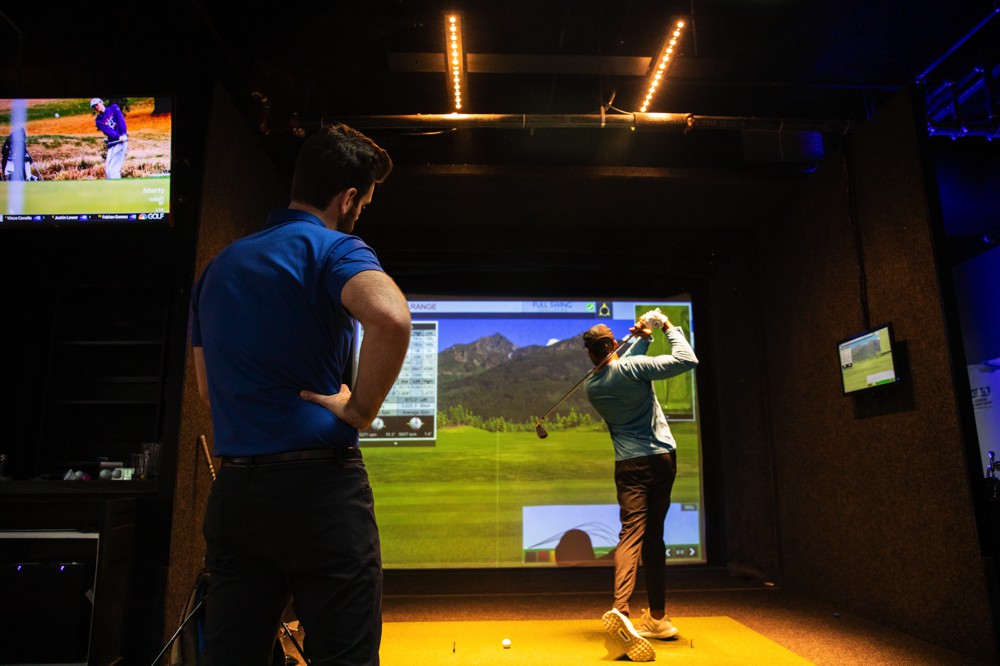A Quick Nine With Matt Brady
1. Tell us about your career as a golf pro?
My career as a golf pro began as a child, playing with my dad and grandfather that instilled my passion for the game, its been a lifelong journey. I had to opportunity to work at several private and public golf clubs as well as social golf experiences like TopGolf.
2. If you could go back in time and coach yourself, what would you work on?
If I could go back in time I would tell myself to be patient and trust the process. This game is a marathon, not a sprint, and we all need to enjoy the journey along the way.
3. Who have been major influences in your career.
My major influences have been my dad and grandfather but also many mentors along the way in many different areas of golf like operations, teaching, coaching and business development.
4. What have you learned from other instructors?
When you’re a new golf instructor a lot of us are eager to impart our knowledge too fast with too much information. The biggest lessons learned have been to slow down, keep the message simple and understandable. After all it’s only good help and advice if the student comprehends the message and can apply it.
5. How do you define success for a student?
I define success for my students with three basic themes, are they having fun, do they understand how to get better and have they achieved the goals they set out at the beginning of the process and along the way.
6. How has technology helped your teaching?
The technology present here at Five Iron is state-of-the-art, and has opened my eyes as an instructor. Now we can correlate a feeling in our swing with data present with every swing, this can really expedite the students understanding of why changes are made and how it can help their golf game.
7. What are the best tools in your arsenal when it comes to creative instruction?
Creatively I’m always trying to come up with new drills to enhance changes. However I find that simple changes and drills that can be done at home have the best retention with students. Wall drills are some of my favorites to create awareness of the club and the students physical movement.
8. What’s your favorite golf movie?
Favorite golf movie is Tin Cup, hands down!
9. Who’s your favorite golfer and why?
I have two favorite golfers, Jack Nicklaus, being that he’s from my home state and Ernie Els for his buttery smooth swing.
You can schedule a lesson with Matt in Chicago by clicking here.
Matching Grip to Swing
Matt Brady – Chicago
If you ever taken a golf lesson or watched YouTube videos late into the night, tirelessly working to improve your golf game. Odds are you’ve watched more than your fair share of content about how to grip the club. Were going to cover pressure points so we have a track for success when building a good grip. When establishing a good grip there are a few cool tricks of the trade to help ensure proper gripping. Starting with right handed golfers, I always start top hand (left hand) first, with the goal in mind to feel pressure points on the left pad of your hand, closest to your pinky finger. This goes in tandem with feeling pressure in the left “trigger” finger with the second knuckle on the back of the grip. If done correctly, when you hold the golf club in front of you parallel to the ground, you’ll feel the pinky side pad of your left hand on top of the club, as well as the trigger finger or left pointer finger under the club. Now if you lower the golf club to the ground you should see your middle and index finger knuckles on top of the grip. This would be considered a traditional grip which we’ll dive into the second half of this post. When we discuss lefties this is simply reversed starting with the right hand.
So, we have the top hand on the grip now let’s add the bottom hand closest to the club head. This may seem obvious but ideally the hands mesh well together and create a tight fit. Specifically, for a right handed golfer, the left thumb should mold or mesh under the pad of the right thumb. Again creating a seamless fit that will keep your hands working together instead if separately.
The second part of this post will address your grip and hand position matching your swing and typical shot shape. This section could apply to more experienced players who have a swing that’s repeatable and consistent. But this can also be top of mind if addressing a player with a physical limitations such as lower back issues or stroke victims who only have dexterity in one hand. Harvey Penick, who famously taught many tour players like Ben Crenshaw and who wrote the Little Red Book, said, “if you have a bad swing you don’t need a good grip”. Golf swings are very unique to each and every golfer and the grip needs to match for that reason. One of the most famous examples would be Ben Hogan, who changed from a traditional perhaps strong grip, to a weaker grip because of his tendency to hook the ball left. Now, there are swings flaws that need to be addressed if you’re too far outside of the acceptable variances. But, if your swing is repeatable and your miss is too severe one way or the other sometimes the easiest and most effective change would be a quick grip modification to create more consistency. If a right handed player is hooking the ball consistently the easiest and quickest change could simply be to feel like the back of the left palm is facing the target instead of pointing to the sky. Vice versus, for someone who fades or slices the ball, would be to turn the left hand more on top of the club feeling that it’s pointing at the sky. Now these are very general references and I would always recommend asking a professional opinion with your local club professional.
You can book a lesson with Matt in Chicago by clicking here.
Match Your Bag To Your Game
Matt Decker – Baltimore
As both a teaching professional and a club fitter, I am in a unique position to observe and influence a player’s game with both equipment and swing changes. Part of my teaching philosophy is the importance of having properly fitting clubs, particularly when the goal we are trying to achieve is improvement. The idea that money can’t buy you a game is a bit of a misconception — clubs that are improperly fit can surely be a detriment to your game.
We will walk through the important aspects of your bag and see if you identify any areas that may need to be addressed.
Shaft Weight and Flex
When looking at a player’s bag, club heads may be the first thing I see, but the shaft type and details of the shaft are the first things I look for. Whether it be the material, the weight, the flex, or the profile of the shaft, all of these things should be based on that individual. When assessing a players shaft, I first look at material — steel or graphite? — and try to see if it matches their swing (or, more importantly, if it doesn’t).
Graphite is no longer just for slower swing speeds; with the technology being used, even the fastest swings in the world can be fit into graphite. The main difference between steel and graphite will be weight. With the traditional steel shaft being around 125 grams, and graphite now getting as low as 30 grams, the player can be set up for failure early in our assessment.
Shaft weight can do several things to your swing. A heavy shaft can slow down swing speed, create an acceleration issue in the swing sequence, and change the ball flight. The shaft flex can also influence the ball’s flight. A shaft that is too soft or too firm will tend to fly offline more often than one which has been fit correctly.
Club Head Type
Matching the club head to your skill level and playing style is also very important. With irons, there are now several categories: game improvement, players distance, muscleback, and cavity back. If you’re a player with a slower swing speed who is an inconsistent ball striker, a larger iron profile, like a game improvement iron, will be more forgiving, launcher higher, and spin less, to help that area of your game.
For driver heads, you can choose between adjustability, forgiveness, MOI, and ball speed preferences thanks to current technology. Getting the proper model that encourages you to become better by growing with swing changes is significantly preferred over altering numbers to fix problems in the short term.
Lie Angle
A club’s lie angle will determine the interaction the club has as it enters the turf at contact. Very often students come in with clubs off the rack and have no idea what the lie angle of the club is or if it is correctly fit for them. If the lie angle is too upright (toe high), the heel of the club may dig at contact, causing the face to close down and the ball to start left. If the club is too flat (toe down), the toe of the club could dig and the ball would start right of target.
The lie angle is also a contributing factor of centeredness of contact. With an iron that is too upright, the contact may be more towards the heel; with an iron that is too flat, the contact may tend to be more towards the toe. When working on your game, having equipment that can alter the start line of your shots could persuade you to work on something that isn’t a swing flaw, but rather a fitting error.
Set Make Up
I think there is a common misconception that because the USGA allows a golfer to carry 14 clubs in his or her bag, then a golfer must carry and use 14 clubs when he or she plays. When conducting a pre-lesson interview, I like to ask students which of their clubs is their most favorite and their least favorite. The general consensus is that the favorite club is between a 7 iron and a pitching wedge, and the least favorite is anything longer than a 5 iron. Why? Because in the longer clubs there are multiple clubs that may perform similarly… For example, if a player hits a driver 200 yards, their yardage gaps may not differ by more than five or six yards between some clubs, making a number of clubs obsolete.
When fitting a beginner, or if there is a financial barrier that we’re trying to stay below, creating a partial set allows for the golfer’s needs to be met while keeping the quality of the clubs at a premium. In other cases, if a student has difficulty with a certain type of club — say a fairway wood — it’s good to analyze if that club is even necessary. Does it hold any benefits for that student, or is it just costing them strokes.
Staying with fairways woods… If a player has a 3 wood, a 5 wood, and possibly a couple of hybrids, but only hits the 5 wood well, I would recommend that they try playing without the other three clubs. For amateur golfers, the amount of times they may need to hit the ball into a green from that distance would be low, assuming the lie allows for those clubs to be hit in those situations and that it is the right play into the green they would be attacking.
When students come to me with a goal of improving their game, I often tell them that there will need to be changes in equipment to see results. We don’t need to break the bank, but getting your set up assessed by your teaching or fitting professional can shave strokes off your game. When investing in your golf swing, take some time to make sure that you aren’t losing out due to improperly fit equipment.
You can book a lesson with Matt in Baltimore by clicking here.
Form Follows Function
Practice with Purpose – Dan McCracken
Order of Analysis
When working to improve your golf game, things need to be handled specifically and in an order. If your main goal is lower scores, then top priority needs to be controlling where the ball goes and not improving the aesthetics of the swinging motion. With that in mind I am always analyzing things in the following order:
- Where/how did the ball fly?
- How did the club interact with the ball to create that flight?
- How did your body affect the club to create those impact conditions?
Before we dig any deeper, it is important to note that we should always be analyzing patterns and not individual reps. If you cannot repeat a specific shot (good or bad) then there is no need to dig too deep in analysis. Golf is a game of consistency, not a game of perfection. Own your swing, learn to repeat it and then you can optimize it from there.
When showing up to practice your golf game, I believe your overarching goal should be to build confidence as a golfer. While there are certainly plenty of psychological factors that contribute to achieving that goal, I think a lion-share of it is analyzing mishits and trying to make them better. As we wade into the vast spectrum of mishits, I like to keep things organized by handling them in an order (based on patterns):
- Contact Misses
- Directional Misses
- Distance/Trajectory Misses
This order also tends to follow the general sequence of how a ball striker improves. Learn to hit the ball solid, contact misses can negatively affect both distance and direction and as such need to be handled first. Learn to curve the ball in one direction (preferably towards the target). Learn to control your trajectory and distance. With that in mind even the best players need to occasionally spend time cleaning up their contact.
There is no better way to train for contact than slowing things down and staying aware. After some time it becomes quite easy to tell if you are catching the ball off the toe, heel, leading edge or if you catch the ground first. Strike or foot spray on the clubface is also a nice option to chart your contact patterns, as is zoomed in swing video. When trying to fix things, start by ensuring you have the correct ball position, this is vital. You also need to be sure you are controlling the low point of your swing arc properly in regards to striking irons vs. driver.





